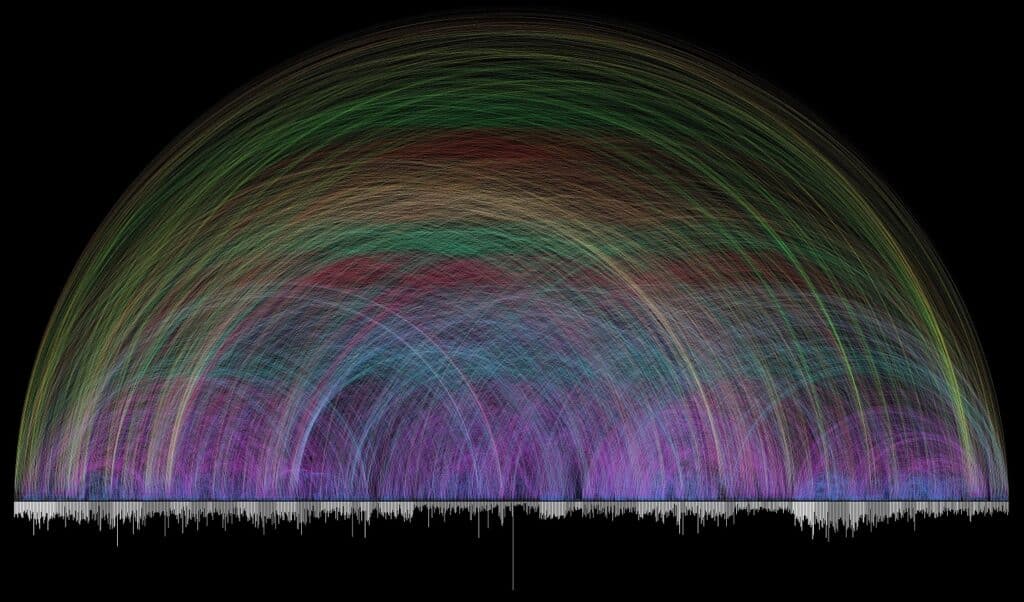Hyperlinks in The Bible

There are almost 64000 cross references or hyperlinks in the Bible. The concept of hyperlinks—clickable words or phrases that connect different parts of a text or multiple texts in digital formats—is widely associated with the advent of the internet and digital communication. However, the foundational idea of interconnected texts can be traced back millennia, especially within the sacred pages of the Bible. Unraveling these ancient “hyperlinks” invites readers into a deeper, multilayered exploration of theological, prophetic, and historical dimensions encapsulated in the scriptures.
The Bible, being a compilation of texts written by numerous authors over centuries, exhibits a remarkable web of intertextuality, where passages, phrases, or themes are echoed, referenced, or elaborated upon across different books and testaments. This intertextual network functions similarly to digital hyperlinks, forging links between disparate segments of the scripture and creating a cohesive, interconnected theological narrative.
One notable example is the intricate connection between the Old and New Testaments. The Old Testament, rich in prophecies and typologies, often foreshadows events, figures, and themes that are fulfilled or echoed in the New Testament. A poignant example is the prophecy of Isaiah 7:14, which speaks of a virgin bearing a son named Immanuel. This is hyperlinked to the New Testament in Matthew 1:23, where the author deliberately references Isaiah, presenting Jesus’s birth as fulfilling this ancient prophecy.
Similarly, the symbolism of the Passover lamb in Exodus, which is without blemish and sacrificed to spare the Israelites, is later connected to John 1:29 in the New Testament, where John the Baptist identifies Jesus as the “Lamb of God.” These links bridge theological concepts across time, creating a coherent, divine story that unfolds throughout the Bible.
These hyperlinks serve to validate the prophetic claims of the Bible, linking promises and prophecies of the Old Testament to their fulfillment in the New Testament. This tapestry of interconnected texts constructs a sturdy theological framework and provides a historical and prophetic context that enriches the interpretative journey of readers and scholars.
Moreover, exploring these hyperlinks deepens the spiritual and theological engagement with the text. It encourages readers to traverse back and forth across books and verses, fostering an enriched understanding of the divine narrative that spans through various epochs and authors. By recognizing the intentional, interwoven connections, believers might find an enhanced appreciation for the intricate, cohesive narrative that unites histories, prophecies, and teachings into a unified theological message.
In contemporary times, digital platforms hosting the Bible often employ technological hyperlinks to facilitate the exploration of these ancient connections, enabling readers to navigate seamlessly between related passages. This not only enhances accessibility but also provides a modern tool to explore the ancient, intertextual web embedded within the scriptures.
The hyperlinks within the Bible serve as a remarkable testament to the unity of its message despite being penned by multiple authors across diverse periods and contexts. This interconnectedness weaves a rich, complex tapestry that invites readers to deeply explore its theological, historical, and prophetic depths, bridging ancient writings with eternal truths. In the digital age, these ancient links are now complemented by technological counterparts, marrying the ancient and the modern in exploring sacred text.
As I prepare for a series of messages at our church on Genesis Chapter 1, I am including the significance of seven in the chapter. I thought I would publish the information here on our Online Bible Institute for anyone interested.
Steve Lawes is a Church Consultant and also provides coaching for pastors, churches, ministries and church planters.
